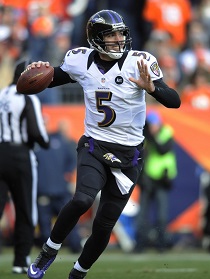[adsenseyu1]
A few weeks ago Jason LaCanfora published a list of best and worst contracts in the NFL so I thought it might make a good idea for us to do the same here at OTC, with a team by team approach. I’ll try to be a bit more analytical in terms of why money was paid and how it fits in the market, but the general premise is the same. The one key difference is outside of restructured rookie contracts under the old CBA we will only use veteran contracts as there is a big difference between best draft picks and best contracts. Please note that there is a difference between a bad player and a bad contract when discussing some of the selections. Clicking on a players name will take you to his salary cap page.
 Best Contract: Marshal Yanda
Best Contract: Marshal Yanda
The Ravens have some interesting deals on the books. They get lower guarantees to help drive the price down but in return will structure deals in a way that are cap friendly on the front end but more difficult to move on from at the end. Yanda’s contract didn’t originally fit into that structure giving the team tremendous flexibility with a really good player. They restructured his contract in 2012, but even then maintained a structure that was still team friendly at the backend.
Yanda is one of the best Guards in the NFL and one of those players that brings the Ravens their identity. Yanda is just a nasty physical player that sets the tone for his team and a game with his play in the trenches. He can fill in at tackle if needed which only increases his value to the team. Guards don’t often get much notoriety unless they block for an explosive offense, but Yanda deserves it.
At $6.4 million a year his contract ranks 10th among Guards. He is better than every player making more money than he is at the position. The Ravens took higher backend cap charges following the restructure allowing them to account for low cap allocations in 2011 and 2012, but even in 2013 his cap charge is only 4th in the NFL at the position. More importantly if his play declined the contractual structure allows them to walk away from the backend higher charges if they need to, charges which are not cap killers in the first place. It is just a nice team friendly contract below the market value of a really good player.
 Worst Contract: Joe Flacco
Worst Contract: Joe Flacco
While it’s no secret that I think Flacco is grossly overpaid based on his performance it’s fair to say that this is the nature of the position. But even that does not excuse a contract just filled with explosive for the Ravens that has the potential to cripple the franchise for seasons if Flacco does not make the same leap other young Quarterbacks made after Super Bowl wins propelled them to fortunes.
Flacco will carry a cap charge of $28.55 million in 2016, an unreasonable figure barring a gigantic leap in salary cap limits for a team. The Ravens can’t move on from him at that point either- his dead money charge is nearly $26 million. Even if he were to fail to live up to the lofty expectations of his contract the Ravens are already locked into $10.55 million in prorated charges in both 2016 and 2017. With $15.3 million in dead money in 2017 it more or less locks the Ravens into a second extension with Flacco that will see a price based on cap leverage as much as skill.
How high are those dead money charges? In Eli Manning’s similar record setting deal he carried dead money charges of $12.7 million and $7.6 million in the 4th and 5th years of his contract. Those numbers represented 13% and 7.8% of his overall contract charge and 77% and 41% of his cap charges in those seasons. Flacco’s numbers represent 21.4% and 12.7% of the overall deal and 90% and 49% of his cap figures. It’s a great contract for the player, perhaps the best in the NFL. For the team it’s a mess just waiting to happen.
Check out Our Other Best & Worst Contract Articles
AFC East: Buffalo Bills, Miami Dolphins, New England Patriots, New York Jets
AFC North: Baltimore Ravens, Cincinnati Bengals (June 29)

